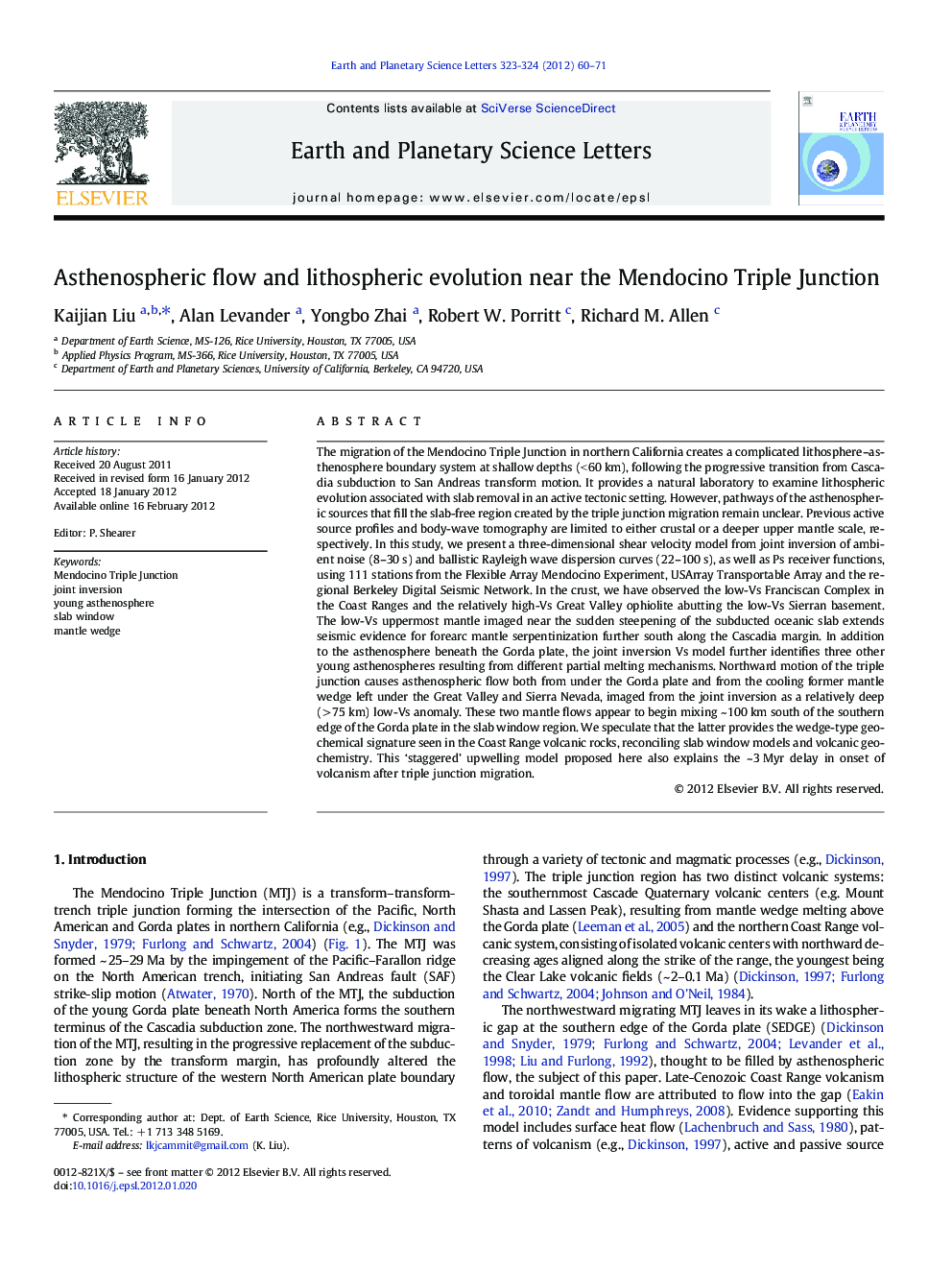| کد مقاله | کد نشریه | سال انتشار | مقاله انگلیسی | نسخه تمام متن |
|---|---|---|---|---|
| 4677556 | 1634809 | 2012 | 12 صفحه PDF | دانلود رایگان |

The migration of the Mendocino Triple Junction in northern California creates a complicated lithosphere–asthenosphere boundary system at shallow depths (< 60 km), following the progressive transition from Cascadia subduction to San Andreas transform motion. It provides a natural laboratory to examine lithospheric evolution associated with slab removal in an active tectonic setting. However, pathways of the asthenospheric sources that fill the slab-free region created by the triple junction migration remain unclear. Previous active source profiles and body-wave tomography are limited to either crustal or a deeper upper mantle scale, respectively. In this study, we present a three-dimensional shear velocity model from joint inversion of ambient noise (8–30 s) and ballistic Rayleigh wave dispersion curves (22–100 s), as well as Ps receiver functions, using 111 stations from the Flexible Array Mendocino Experiment, USArray Transportable Array and the regional Berkeley Digital Seismic Network. In the crust, we have observed the low-Vs Franciscan Complex in the Coast Ranges and the relatively high-Vs Great Valley ophiolite abutting the low-Vs Sierran basement. The low-Vs uppermost mantle imaged near the sudden steepening of the subducted oceanic slab extends seismic evidence for forearc mantle serpentinization further south along the Cascadia margin. In addition to the asthenosphere beneath the Gorda plate, the joint inversion Vs model further identifies three other young asthenospheres resulting from different partial melting mechanisms. Northward motion of the triple junction causes asthenospheric flow both from under the Gorda plate and from the cooling former mantle wedge left under the Great Valley and Sierra Nevada, imaged from the joint inversion as a relatively deep (> 75 km) low-Vs anomaly. These two mantle flows appear to begin mixing ~ 100 km south of the southern edge of the Gorda plate in the slab window region. We speculate that the latter provides the wedge-type geochemical signature seen in the Coast Range volcanic rocks, reconciling slab window models and volcanic geochemistry. This ‘staggered’ upwelling model proposed here also explains the ~ 3 Myr delay in onset of volcanism after triple junction migration.
► A new Vs model from joint inversion of receiver function and Rayleigh wave.
► Identify four young asthenosphere after MTJ migration with complicated structures.
► Proposed a ‘staggered’ upwelling model to reconcile existing observations.
► Extended seismic evidence for forearc mantle serpentinization in Cascadia margin.
► Explained delay in onset of volcanism above slab window in the Coast Ranges.
Journal: Earth and Planetary Science Letters - Volumes 323–324, 15 March 2012, Pages 60–71